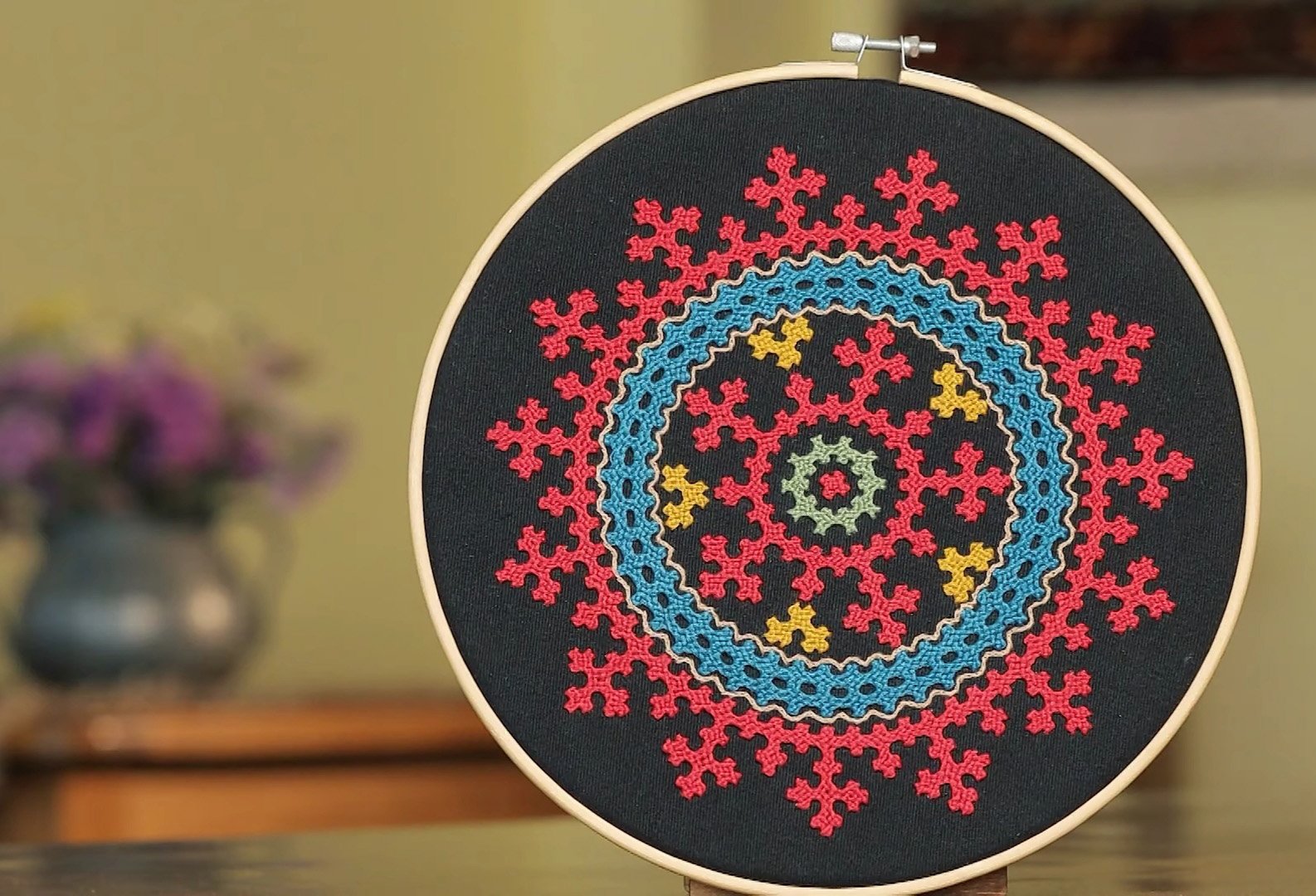Armenian Marash Embroidery
Marash embroidery by designer and instructor Ruzanna Grigoryan.
Image courtesy of Massachusetts Cultural Council.
The tradition of Marash embroidery comes from what was originally the kingdom of Cilician Armenia in the 12- and 1300s and is now part of south-eastern Turkey. Needle-weaving through a structure of stitches forms small crosses. The crosses interlink, making geometric forms–symbols of life and protection. Artist, designer and instructor Ruzanna Grigoryan will be teaching a second Marash online workshop with English translation, live from Yerevan, for the ThreadWritten community on Saturday, April 9.
Women have embroidered to express their hopes, intentions, and the pain they couldn’t otherwise communicate. In his keynote address at the 2019 American Craft Council Conference, Armenian-American and editor-in-chief of the online arts magazine Hyperallergic, Hrag Vartanian spoke about craft as a “coded language, spoken in different registers to different people.” One woman used her embroidery to express the pain of the genocide in 1915, her experience, and the depatriation of Armenians, knowing that people wouldn’t be able to make sense of her stitches at the time. Now, one hundred years later, people recognize their meaning, an attempt to free herself from her pain.
In his insightful address, Vartanian says that craft is universal. “Even when rooted in local materials, histories, and realities, craft embraces the world and everyone it comes into contact with.” Feeling the embrace of the embroidered textiles in the Ethnographic Museum in Budapest led me to start ThreadWritten ten years ago (10 years ago last month!). The warmth of the colors, patterns, and materials and feeling the hours of care and intention in a shirt sleeve, skirt border, or memorial tapestry continue to draw me in again and again. Embroidery and that energy can be a beacon for us today. I am grateful to connect with women like Ruzanna, to learn from her, and help share the beauty and warmth of Marash embroidery. Hope you can join us on April 9!
Please read Vartanian’s rich and inspiring talk, with more detail about his family’s relationship with embroidery HERE.
Folk purse made by recent immigrant women in Boston, MA, ca. 1917 (?), collection of The Smithsonian Museum of American History.
Image courtesy of Hye Antiques.
Late 19th c fragment via 1st Dibs.
Late 19th c fragment with back showing via 1st Dibs.






